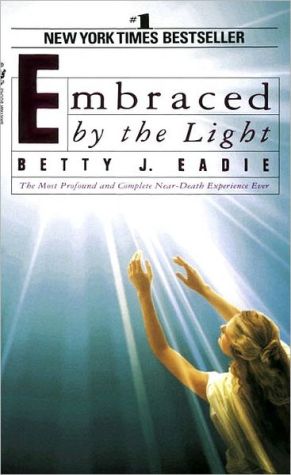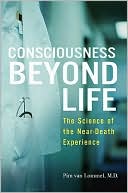The Third Man Factor: Surviving the Impossible
The Third Man Factor is an extraordinary account of how people at the very edge of death often sense an unseen presence beside them who encourages them to make one final effort to survive. This incorporeal being offers a feeling of hope, protection, and guidance, and leaves the person convinced he or she is not alone. There is a name for this phenomenon: it’s called the Third Man Factor.\ If only a handful of people had ever encountered the Third Man, it might be dismissed as an unusual...
Search in google:
Hailed by critics and a popular bookseller favorite, The Third Man Factor vividly explores the human capacity to survive and transcend extreme conditions. Publishers Weekly A scientific mystery or divine intervention is how Geiger, the editorial board editor at the Globe and Mail and author of Frozen in Time, describes “The Third Man Factor,” the human knack of facing deprivation and possible death with an unseen presence pointing the path to survival. He researched these visitations for six years, chronicling their history in harrowing life-and-death events with mountaineers, sailors, divers, aviators and polar explorers. It is to Geiger's credit that he stresses the very human need to endure and survive through critical times in the included anecdotes over the sometimes convoluted scientific jargon, especially the gripping tales of the last 9/11 survivor Ron DiFrancesco, NASA astronaut Jerry Linenger aboard the Mir space station and merchant seaman Kenneth Cooke, who paddled in shark-infested waters. Whether this “guardian angel” factor is neurological or divine, Geiger's fresh, insightful book will tell readers “things that are not easily explainable, but no less real for that.” (Sept.)
CHAPTER FOUR\ The Guardian Angel\ WHILE SERVING IN THE ROYAL NAVY during the Second World War, the British neurologist Macdonald Critchley studied the cases of 279 sailors and airmen who had been cast adrift. In his 1943 study Shipwreck-Survivors, he described the ordeals that befell the men, including gruesome physical conditions like "immersion foot," but also harrowing psychological aberrations such as bioscopic fantasies, where past events from a person's life flash before them at incredible speed. It was during the course of one interview for his study that Critchley first came across a report of a very different experience, that of a "guardian angel." The account came from a Royal Navy Fleet Air Arm pilot who, with his observer, was forced to ditch into the North Atlantic on May 25, 1941. They had been on a reconnaissance mission tracking the German battleship Bismarck, operating at night, in terrible weather, and without radar. They became lost over the sea; their aircraft eventually ran out of fuel and was forced down. They were soon adrift in a rubber dinghy. The conditions were appalling, characterized by Critchley as "severe physical discomfort . . . going on to utter collapse. There had been exposure to bitter cold and wet; and intense thirst and lack of food. . . . Prospects of rescue were remote, and though from time to time hopes would soar in an extravagant and unwarranted fashion, they would soon be dashed again with realization of their tragic plight." Through it all, the pilot and observer both "kept imagining that there was a third person along with them."1 The two men had no doubt as to the identity of their visitor. They said an angel had helped to seethem through their terrifying ordeal. Critchley found this "not surprising . . . especially in the case of distressed and exhausted shipwrecked seamen. The 'Guardian Angel' motif is inescapable to those with strong beliefs." He was aware of the weighty theological tradition behind the concept: "The notion of an angelo custode is a common teaching and is depicted in religious art as an angel with a wide wingspan standing as an unseen protector behind a little child." Not all who have encountered an unseen presence attribute it to a divine origin. But for those with strong beliefs, like Ron DiFrancesco in the World Trade Center, or the Fleet Air Arm pilot and his observer, help came in the form of an angel. For others of faith, the Third Man came cloaked in different religious garb, as with Shackleton's "Divine Companion" and McKinlay's overtly spiritual encounter with a presence. It was, then, not in scientific journals that Critchley turned to look for further accounts of the Third Man. Instead, he wrote, "in theological literature we find the most explicit references." Critchley examined works of purely religious character, and found examples he thought more likely to have been presence experiences than religious visions. He identified one in the autobiography of the Spanish nun Saint Teresa of Avila (1515-1582): I was at prayer . . . when I saw Christ at my side-or, to put it better, I was conscious of Him, for neither with the eyes of the body nor with those of the soul did I see anything. . . . I could not help realizing that He was beside me. . . . It is not a suitable comparison to say that it is as if a person were in the dark, so that he cannot see someone who is beside him, or as if he were blind. There is some similarity here, but not a great deal, because the person in the dark can detect the other with his remaining senses, can hear him speak or move, or can touch him. In this case there is nothing like that.2 IT HAS BEEN ESTIMATED that during the early years of Christianity, as many as five thousand Christian hermits retreated to the desert, where they sought spiritual renewal and communion with God through solitude, fasting, self-inflicted pain, meditation, and prolonged prayer.3 The fourth-century monks of the Thebaid felt the near proximity of God in the deserts of Egypt, where they lived in an isolated environment of reduced sensory input. Wrote the social critic and novelist Aldous Huxley about the role of sensory deprivation in religious traditions: "If you read the life of Milarepa, the great Tibetan hermit, or if you read the lives of St. Anthony and St. Paul, hermits in the Christian tradition, you can see that this isolation did in fact produce visionary experiences."4 Milarepa, after living for many months in a cave, was visited by his sister, who was terrified at the sight of him. She felt as if she had seen a ghost. Little wonder. In his Life Milarepa described his appearance: My body was wasted by asceticism. My eyes were sunk in their sockets. All my bones protruded. My fleshes were dried out and green. The skin covering my fleshless bones looked like wax. The hair on my body had become coarse and grey. From my head it streamed down in a frightening flood. My limbs were about to fall apart.5 Milarepa, however, is credited with having attained a state of complete enlightenment, and a Tibetan Buddhist monastery now stands at what is purported to be the entrance to his cave. Similarly, among tribal people in Africa, Asia, and commonly in aboriginal groups in North America, a solitary period in the wilderness, with attendant hardship and deprivation, marks a rite of passage from childhood to adulthood through the acquisition of a guardian spirit. In particular, the vision or spirit quest of North American Indians represents a "sought vision induced by hunger, thirst, purgatives, and self-laceration."6 A young man would be sent to an isolated place to fast and pray. The result: "He may be visited by what, he thinks, are supernatural beings."7 A similar rite is practiced by the Inuit, where monotony, through long walks on the tundra, or confinement to an igloo, is used to evoke a spirit. A Jesuit account from 1642 described a North American Indian spirit quest. A young man, "when but fifteen or sixteen years of age, retired to the woods to prepare himself by fasting for the appearance of some Demon." After living in isolation and going without food for sixteen days, "he saw an aged man of rare beauty who came down from the Sky, approached him, and looking kindly at him said, 'Have courage. I will take care of thy life.'" In another recorded case, a Plains Indian named Medicine Crow "fasted for four days. He cut off a finger and offered it to the Sun. . . . The blood poured down." He collapsed, but near dawn, "he saw a young man and a young woman coming from the west." The benevolent beings "talked with him [and] gave him medicine."8 These rare surviving aboriginal accounts are remarkably similar to those given by Western explorers and climbers, and also by survivors of man-made disasters.
Foreword Vincent Lam xiChapter 1 The Third Man 1Chapter 2 Shackleton's Angel 20Chapter 3 The Ghosts Walk in Public 44Chapter 4 The Guardian Angel 64Chapter 5 The Pathology of Boredom 83Chapter 6 The Principle of Multiple Triggers 104Chapter 7 Sensed Presence (I) 117Chapter 8 The Widow Effect 123Chapter 9 Sensed Presence (II) 158Chapter 10 The Muse Factor 173Chapter 11 The Power of the Savior 191Chapter 12 The Shadow Person 221Chapter 13 The Angel Switch 237Acknowledgments 255Notes 259Index 285
\ Publishers WeeklyA scientific mystery or divine intervention is how Geiger, the editorial board editor at the Globe and Mail and author of Frozen in Time, describes “The Third Man Factor,” the human knack of facing deprivation and possible death with an unseen presence pointing the path to survival. He researched these visitations for six years, chronicling their history in harrowing life-and-death events with mountaineers, sailors, divers, aviators and polar explorers. It is to Geiger's credit that he stresses the very human need to endure and survive through critical times in the included anecdotes over the sometimes convoluted scientific jargon, especially the gripping tales of the last 9/11 survivor Ron DiFrancesco, NASA astronaut Jerry Linenger aboard the Mir space station and merchant seaman Kenneth Cooke, who paddled in shark-infested waters. Whether this “guardian angel” factor is neurological or divine, Geiger's fresh, insightful book will tell readers “things that are not easily explainable, but no less real for that.” (Sept.)\ \ \ \ \ Kirkus ReviewsAn award-winning Canadian author uncovers spiritual guardians who aid those in states of crisis. Globe and Mail editorial board director Geiger (Nothing Is True, Everything Is Permitted: The Life of Brion Gysin, 2005, etc.) presents dozens of examples of people who have encountered an unseen presence, or, as T.S. Eliot wrote in The Wasteland, "the third who walks always beside you." Typically, the "Third Man" is either sensed or manifests in a shadowy formation appearing amid hopeless circumstances proffering words of encouragement and direction. Ron DiFrancesco, one of the last survivors to escape the South Tower on 9/11, chronicles an unseen "benevolent helper" who guided him down through a fiery, smoke-choked stairwell and disappeared soon after. Crushed by an avalanche, a mountain climber received inspiration from an "invisible being" who led him to safety. A panicked diver lost sight of her guideline within a maze of undersea caves and was inexplicably guided to the surface. Members of a doomed Antarctic expedition describe their encounter as having "spiritual significance." Geiger also writes of sailors cast adrift, biblical theologians, lonesome widowers and postpartum women, all of whom claim that their individual rescues were caused by angelic interaction. Even famed aviator Charles Lindbergh reported seeing friendly "phantoms," though a psychological evaluation attributed his claim to monotony and boredom. The phenomenon's counterpoint suggests stress, depression-induced hallucinations, malnutrition, social stagnancy and extreme environmental exposure as probable contributors to the appearance of the Third Man. Geiger evenhandedly presents both sides of this mysterious anomalyin clear, concise language. Ultimately, he labels the Third Man an "instrument of hope...the belief-the understanding-that we are not alone."An intelligent rendering of a chilling phenomenon. Author tour to New York, Chicago, Minneapolis, Denver, Seattle, Portland, Ore.\ \








